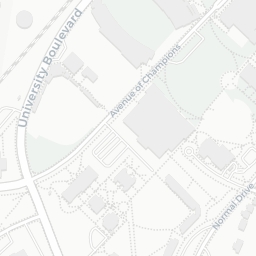Definition and Rationale of Goals and Objectives - School of Teacher Education
Definition and Rationale of Goals and Objectives
The What, Why, How and When?
What?
What are goals?
Goals are broad, generalized statements about what is to be learned. Think of them
as a target to be reached, or "hit."
What are instructional objectives?
An instructional objective is a statement that will describe what the learner will be able to do after completing the instruction. (Kibler, Kegla, Barker, Miles, 1974).
According to Dick and Carey (1990), a performance objective is a detailed description of what students will be able to do when they complete a unit of instruction. It is also referred to as a behavioral objective or an instructional objective.
Robert Mager (1984), in his book Preparing Instructional Objectives, describes an objective as "a collection of words and/or pictures and diagrams intended to let others know what you intend for your students to achieve" (pg. 3). An objective does not describe what the instructor will be doing, but instead the skills, knowledge, and attitudes that the instructor will be attempting to produce in learners.
- Instructional objectives are specific, measurable, short-term, observable student behaviors. They indicate the desirable knowledge, skills, or attitudes to be gained.
- An instructional objective is the focal point of a lesson plan. Objectives are the foundation upon which you can build lessons and assessments and instruction that you can prove meet your overall course or lesson goals.
- Think of objectives as tools you use to make sure you reach your goals. They are the arrows you shoot towards your target (goal).
- Begin with an understanding of the particular content to which the objectives will relate.
- The purpose of objectives is not to restrict spontaneity or constrain the vision of education in the discipline; but to ensure that learning is focused clearly enough that both students and teacher know what is going on, and so learning can be objectively measured. Different archers have different styles, so do different teachers. Thus, you can shoot your arrows (objectives) many ways. The important thing is that they reach your target (goals) and score that bullseye!
In summary, goals and objectives guide all teaching, learning and assessment.
When writing instructional objectives, focus on the learner, not the teacher!
Why?
The purpose of a behavioral objective is to communicate . Therefore, a well-constructed behavioral objective should leave little room for doubt about what is intended.
- Objectives communicate and guide development of assessment, instructional methods, and content materials.
- Objectives communicate the focus of learning that enables instructors and students to work toward a common goal.
- The teacher can use objectives to make sure goals are reached.
- Students will understand expectations. Any skill is learned more effectively if the learner understands the reason for learning and practicing it.
- Objectives communicate the a ssessment and grading. Objectives provide a means of measuring whether the students have succeeded in acquiring skills and knowledge.
- Objectives communicate and allow students the opportunity for self-evaluation .
How?
Instructional objectives must be written to communicate realistic, measurable, and learner centered outcomes.
- Realistic objectives can be achieved by the learners within your time frame and in your given environment.
- Measurable objectives enable you to observe and determine how well learners have acquired skills and knowledge.
- Learner centered objectives state what the learner can do at the end of training. They always start with action verbs.
- Specify intended results or outcomes, and not the process Teaching and lecturing is part of the process of instruction, but it isn't the purpose of the instruction. The purpose is to facilitate learning.
Instructional objectives contain four components: the Audience, the Behavior, the Condition, and the Degree. (Section 4 of this tutorial fully describes these components.)
When?
Objectives should be developed:
- Before a lesson or course is developed (by designer).
- Before a lesson or course is taught (by instructor).
- Objectives should be reviewed with students at the beginning of the course/module/lesson.
The School of Teacher Education
Gary A. Ransdell Hall, Office 1005
1906 College Heights Blvd. #11030,
Bowling Green, KY 42101-1030
Additional Information
Program Info




















